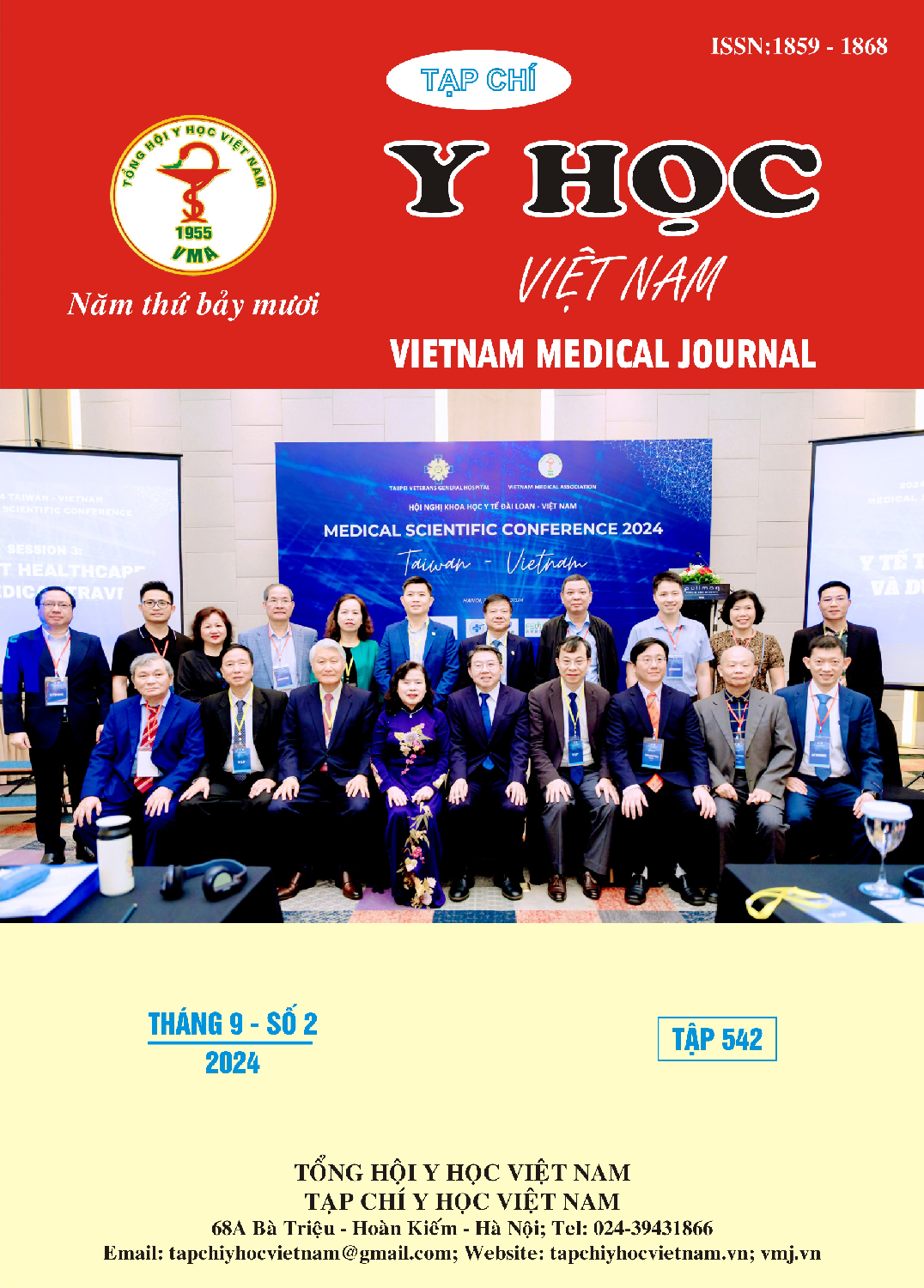UNAWARENESS OF HYPOSMIA IN PATIENTS WITH PARKINSON’S DISEASE
Main Article Content
Abstract
Background: Olfactory dysfunction is a common non-motor symptom in Parkinson's disease (PD). Hyposmia plays a supportive role in differentiating PD from other disorders such as essential tremor, drug-induced Parkinsonism, vascular Parkinsonism, and progressive supranuclear palsy. However, many PD patients do not recognize hyposmia by themselves before being evaluated with objective olfactory tests. Objectives: The aim of this study was to determine the frequency of unawareness of hyposmia in patients with PD, and to investigate factors associated with awareness ability of hyposmia in PD patients. Methods: This cross-sectional study was conducted at University Medical Center HCMC, Ho Chi Minh city. Patients were diagnosed with PD according to the International Parkinson’s Disease and Movement Disorder Society 2015 Diagnostic Criteria. All participants were asked “Do you reduce your sense of smell?”. PD patients were assessed for odor identification ability using the VSIT (Vietnamese smell identification test). Socio-demographic data and PD related information were collected. Participants were assessed cognitive station using MMSE. PD patients were evaluated for disease severity using H&Y staging and the MDS-UPDRS (Movement Disorder Society-Unified Parkinson's Disease Rating Scale). Results: Among 218 PD patients, 113 (51.8%) patients reported that they had normal olfaction, but their VSIT scores were less than 8. Among 184 PD patients with hyposmia, only 71 (38.6%) patients correctly identified that they had hyposmia. Our study showed that there was no difference in MMSE scores between the unaware group and the aware group (P=0.56). The group that was aware of hyposmia had older age, older age at onset, and higher education level than the unaware group (all P < 0.05). Conclusion: Many PD patients do not recognize hyposmia. Our study found that awareness of hyposmia in PD patients was related to education level, and was not significantly related to cognitive function assessed by the MMSE scale
Article Details
Keywords
Parkinson’s disease, unawareness, hyposmia, Vietnamese smell identification test
References
2. Alonso CCG, Silva FG, Costa LOP, Freitas S. Smell tests to distinguish Parkinson's disease from other neurological disorders: a systematic review and meta-analysis. Expert Rev Neurother. Mar 2021;21(3):365-379. doi:10.1080/14737175.2021.1886925
3. Kawasaki I, Baba T, Takeda A, Mori E. Loss of awareness of hyposmia is associated with mild cognitive impairment in Parkinson's disease. Parkinsonism Relat Disord. Jan 2016;22:74-9. doi:10.1016/j.parkreldis.2015.11.015
4. Shill HA, Hentz JG, Caviness JN, et al. Unawareness of Hyposmia in Elderly People With and Without Parkinson's Disease. Movement disorders clinical practice. Jan-Feb 2016;3(1):43-47. doi:10.1002/mdc3.12220
5. Leonhardt B, Tahmasebi R, Jagsch R, Pirker W, Lehrner J. Awareness of olfactory dysfunction in Parkinson's disease. Neuropsychology. Jul 2019; 33(5): 633-641. doi:10.1037/neu0000544
6. Doty RL, Deems DA, Stellar S. Olfactory dysfunction in parkinsonism: a general deficit unrelated to neurologic signs, disease stage, or disease duration. Neurology. Aug 1988;38(8): 1237-44. doi:10.1212/wnl.38.8.1237
7. Patel U, Savant Sankhla C. Unawareness of hyposmia in patients with idiopathic Parkinson’s disease. 2020;3(3): 163-166. doi:10.4103/ aomd.Aomd_24_20
8. Patel U, Savant Sankhla C. Unawareness of hyposmia in patients with idiopathic Parkinson’s disease. Annals of Movement Disorders. 2020; 3(3): 163-166. doi: 10.4103/ aomd.Aomd_24_20


